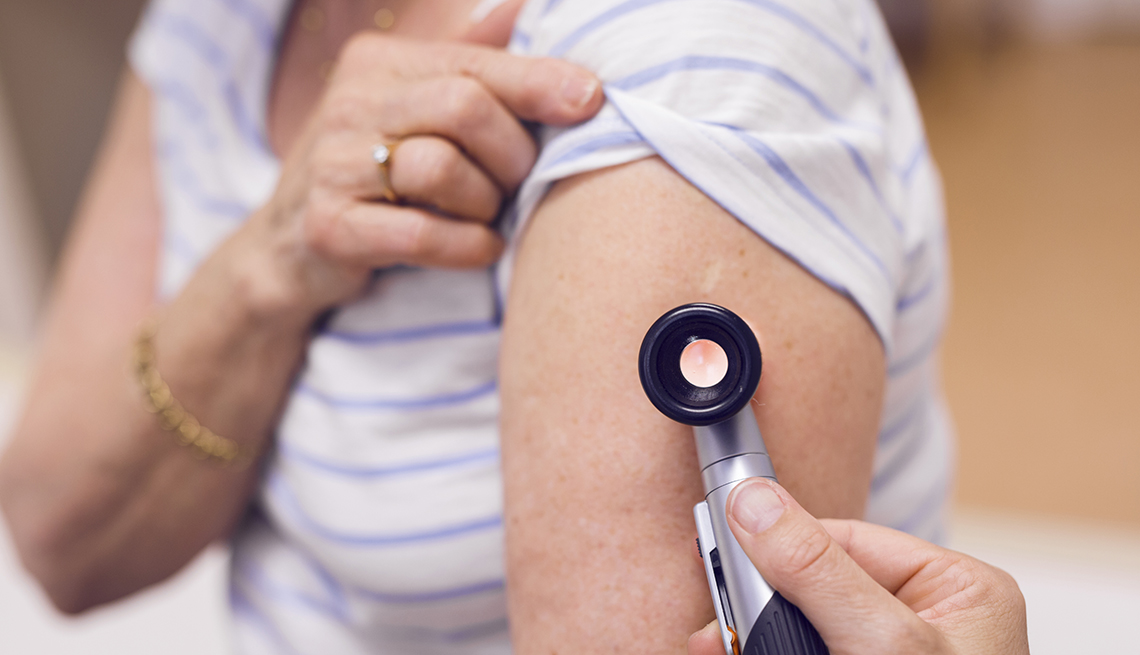
4 warning signs of melanoma that are easy to miss
- Select a language for the TTS:
- UK English Female
- UK English Male
- US English Female
- US English Male
- Australian Female
- Australian Male
- Language selected: (auto detect) - EN
Play all audios:

2. ‘WHERE THE SUN DOESN’T SHINE’ The majority of melanomas are thought to be caused by ultraviolet (UV) light, but not all of them come from sun exposure. Melanoma can develop anywhere on
the body, including “in places the sun doesn’t shine,” like the soles of the feet or the palms of the hand, says Elizabeth Quigley, M.D., a dermatologist and associate physician at Memorial
Sloan Kettering Cancer Center in New York. The cancer can also appear as a dark streak under a fingernail or toenail, which is what happened to musician Bob Marley. He initially mistook his
melanoma for a bruise on the toe and eventually died from it. (A clue that you should see a doctor: If you discover a dark spot under the nail bed that doesn’t grow out with the nail over
time, like a blood blister would, Buchbinder says it’s time to make an appointment.) And while it’s rarer, melanoma also can develop on the eye, inside the mouth or on the scalp. Buchbinder
has even seen patients experience changes in their hair color — “someone who had gray hair and developed a black streak” — because of a melanoma growing on the scalp. “So, strange things can
happen, but these aren’t common ones,” she adds. That said, these “hidden” melanomas are more common in people with darker skin, points out Vishal Patel, M.D., associate professor of
dermatology at the George Washington School of Medicine & Health Sciences and director of the cutaneous oncology program at the GW Cancer Center. “I tell Black and Indian and Asian
patients that if you have nail changes, [any dark spots] on your palms and soles, as well as in the eye and mouth, these are ones that I worry about,” Patel says. “Because while it is less
common to have that, when it does happen, it is worse. So, it’s important to know about that.” Melanoma is 20 times more common in white individuals than in Black individuals, according to
the American Cancer Society. Hispanics are also less likely than their white peers to get the skin cancer. However, when melanoma develops in people of color, it’s often diagnosed at a
later, more dangerous stage. A 2019 study from the Centers for Disease Control and Prevention (CDC) found that the five-year melanoma survival rate among non-Hispanic Black populations was
66.2 percent, compared with 90.1 percent for non-Hispanic white populations. 3. RED, WHITE AND BLUE HUES Melanomas are often depicted as dark-brown moles, but they can actually present in a
variety of colors. The cancer may have a blue tint to it, from deeper pigmentation, says Robert Brodell, M.D., chair of the Department of Dermatology at the University of Mississippi Medical
Center. Or it can appear red, the result of an immune response. “The body is attacking it. It knows it’s abnormal and it’s trying to defend itself, and you get inflammation,” Brodell
explains. It’s also possible for a melanoma to “look like a rash,” Quigley says, and to take on a pink hue. But when the spot doesn’t get better with creams and other treatments that
normally nix a rash, “you need to check and make sure that that’s not a skin cancer,” she adds. Another sign of a melanoma can be lack of color. Some of these cancerous spots lose their
pigmentation completely or partially, leaving a halo of white around a darker spot. “And that’s something that gives us a little concern,” Buchbinder says. “Was the body recognizing
something like a melanoma that was going wrong, and in its process of destroying the melanoma, it destroyed some of the normal melanocytes [cells in the skin that produce pigment] in that
area? It’s just one of those things that may kind of make you look a little closer at something.”
